Trading Cow Manure for Freshwater: One Solution to Water Scarcity
How much water did you use today? Did you take a shower, flush a toilet, wash dishes, or put on clean clothes? Did you have any problems getting the water you used? Half of the people living in the world today have limited access to water for at least one month of the year. And 500 million people don’t have enough water all year. Meghalaya, India, is one place that suffers from water scarcity. But thanks to a new technology, some people living in Meghalaya can now trade resources they have, such as cow manure and rice husks, for freshwater.
 A dishwasher uses between 5 and 15 gallons of water per use. SbytovaMN/iStock/Getty Images Plus
A dishwasher uses between 5 and 15 gallons of water per use. SbytovaMN/iStock/Getty Images Plus
Why do some locations have limited access to water? 70% of Earth’s surface is covered with ocean water. But people can’t drink salty ocean water, and it also can’t be used to water crops. Only 2.5% of water on Earth is freshwater. Most of the freshwater used by people in homes or businesses is either from surface water or groundwater. Some locations have enough freshwater resources to meet their needs and some do not. Locations that need more freshwater than they have need to get water from other places. For example, California gets water from seven surrounding states. But moving water requires energy.
 The California Aqueduct moves water from northern and central California to the more populated and drier areas of southern California. United States Geological Survey
The California Aqueduct moves water from northern and central California to the more populated and drier areas of southern California. United States Geological Survey
There is a source of freshwater everywhere: air. Air contains water vapor, the gaseous form of water. To drink it or use it to water crops, it needs to be changed from gas to liquid. How does that happen? Think about a glass of ice water on a hot day. The outside of the glass gets wet. Where does that water come from? It is from water vapor in the air. When water vapor touches the cold glass, it changes to liquid water. So the key to changing the water vapor to liquid is to cool the air.
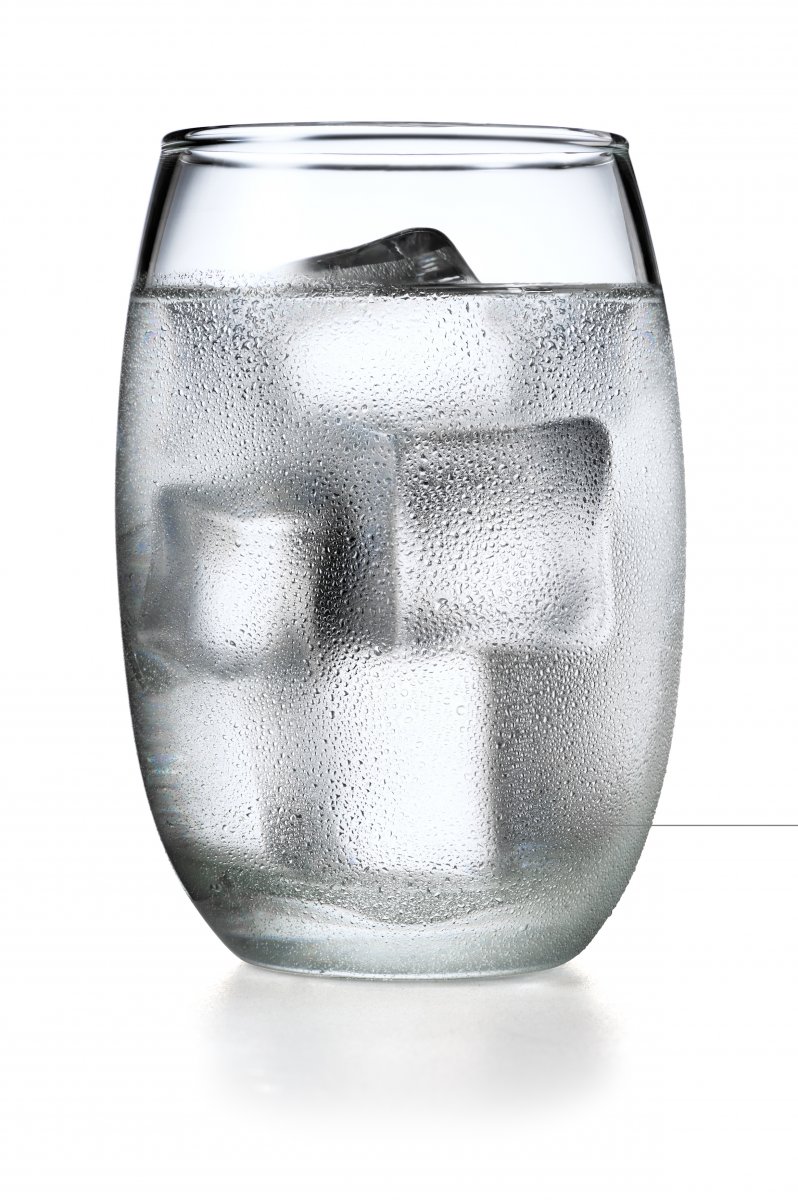 Condensation forms on the outside of a glass of ice water. EvilWata/iStock/Getty Images Plus
Condensation forms on the outside of a glass of ice water. EvilWata/iStock/Getty Images Plus
This simple idea is the basis for a new technology to get water from air. In 1994 a man named Richard Groden was renovating a hotel on the island of Mustique. At the time, Mustique had its water brought in via boat from a neighboring island. As part of the renovation, Groden’s company installed an air conditioning system. As air conditioners cool air, they produce water. Since water was scarce, Groden used the water from the air conditioner to irrigate the plants on the grounds of the hotel. But the plants, which were native to the arid island, died. They got too much water. That gave Groden an idea. If the air conditioner was producing so much water on the arid island, could he make a similar machine to intentionally generate water in places that need it? By 2001 he had a prototype machine, which is now called Skywater. This is one example of technology known as atmospheric water generation.
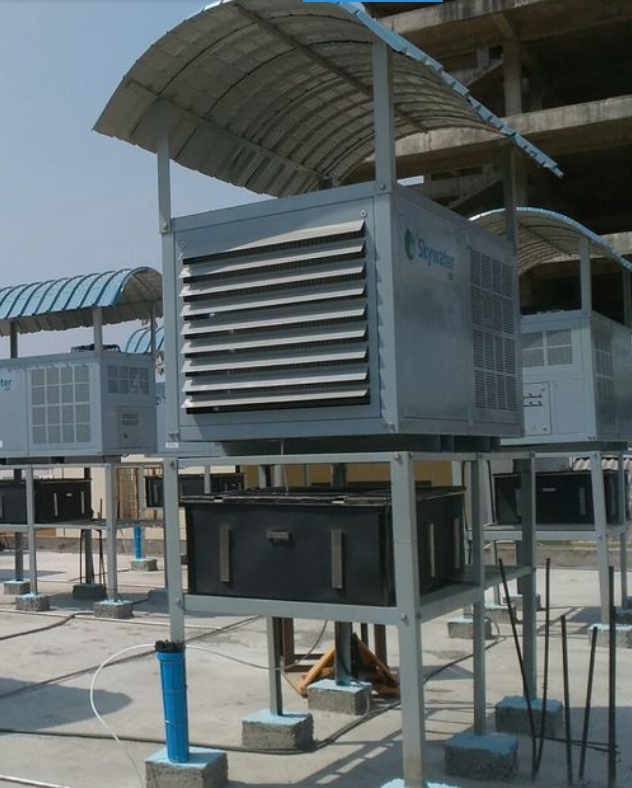 A Skywater machine is an example of atmospheric water generation technology. Island Sky®
A Skywater machine is an example of atmospheric water generation technology. Island Sky®
Skywater operates like a cloud in a box. Warm, humid air is drawn through a vessel. The vessel contains cooling tubes. When the water vapor hits the cooling tubes, it condenses and creates rain. The water collects at the bottom of the vessel. One advantage of atmospheric water generation is that it is a point-of-use solution. Energy is not required to move water from one place to another. It can provide water for people living in remote areas, undeveloped areas, or disaster relief zones.
However, powering the cooling technology requires energy. Where can that energy come from? Ideally, it comes from a renewable energy source. For example, David Hertz, a Skywater distributer in California, put a Skywater machine powered by solar energy in Venice, California. Venice, like other parts of California, has limited water. The water generated from that machine is available for public use. It is used to water 82 community garden boxes throughout the city.
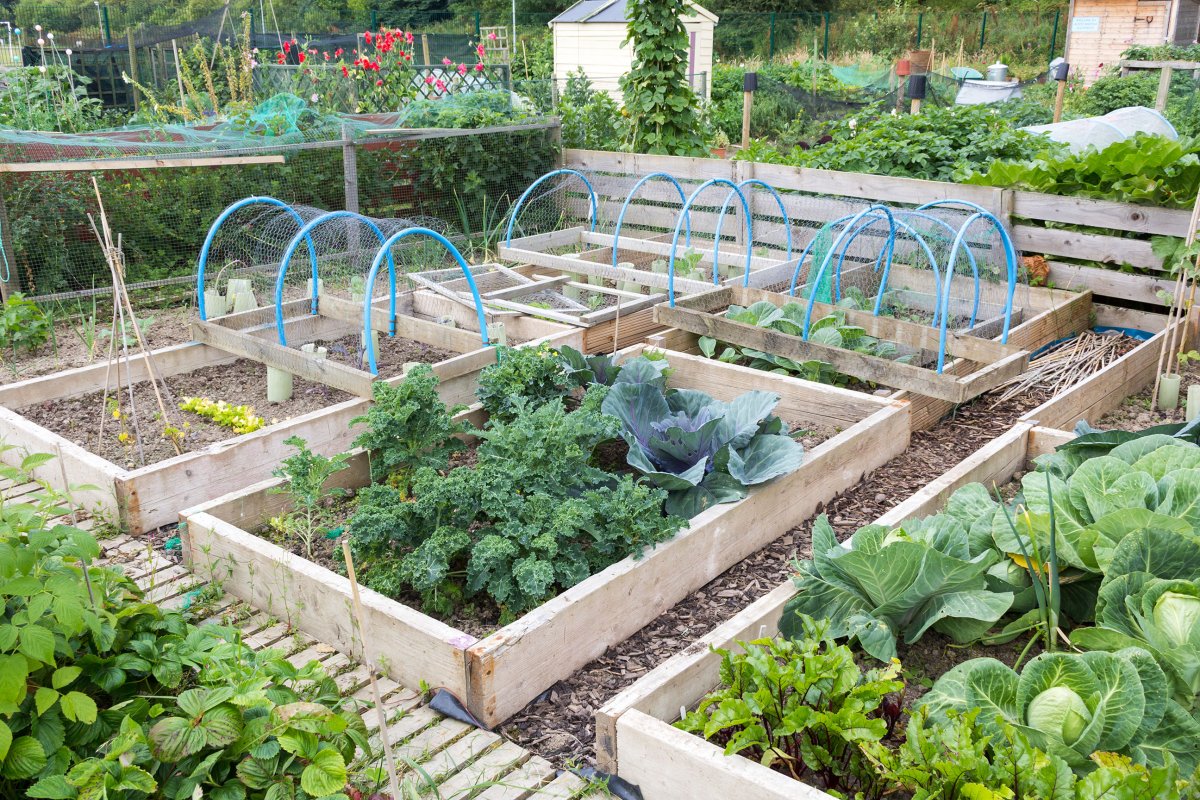 Solar-powered water generation can provide water for community gardens. johnbraid/iStock/Getty Images Plus
Solar-powered water generation can provide water for community gardens. johnbraid/iStock/Getty Images Plus
The problem with powering Skywater with solar energy is that it requires a large space for the solar energy panels. And running the machine 24 hours a day requires a large battery to store the energy collected during daylight hours so that the machine can run at night. The solar panels plus the battery are expensive. Richard Groden encountered this problem when he was searching for an energy source to power Skywater machines in Meghalaya, India. The government of Meghalaya wanted to install Skywater machines because the groundwater there is contaminated with arsenic. Groden had to find a less expensive solution for powering the machines.
That solution was biomass gasification. During biomass gasification, biomass fuel is converted to a combustible gas. Using biomass, such as wood, for fuel is considered a carbon-neutral form of energy. This is because carbon dioxide was absorbed by the plants that make up the biomass. Gasification releases less carbon dioxide compared to burning biomass. This is because some of the carbon is left behind in biochar, which is a by-product of gasification. Biochar can then be added to soil to benefit crops.
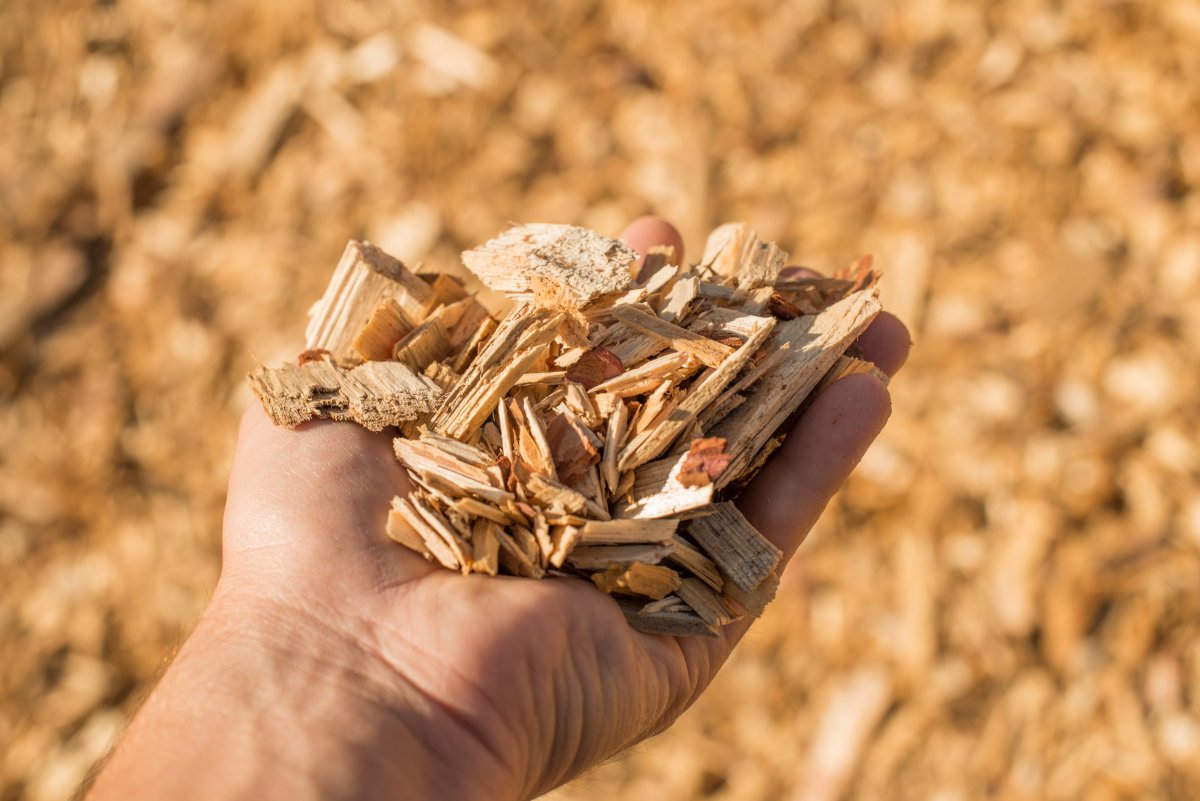 Woodchips are one form of biomass that can be gasified for energy. Main_sail/iStock/Getty Images Plus
Woodchips are one form of biomass that can be gasified for energy. Main_sail/iStock/Getty Images Plus
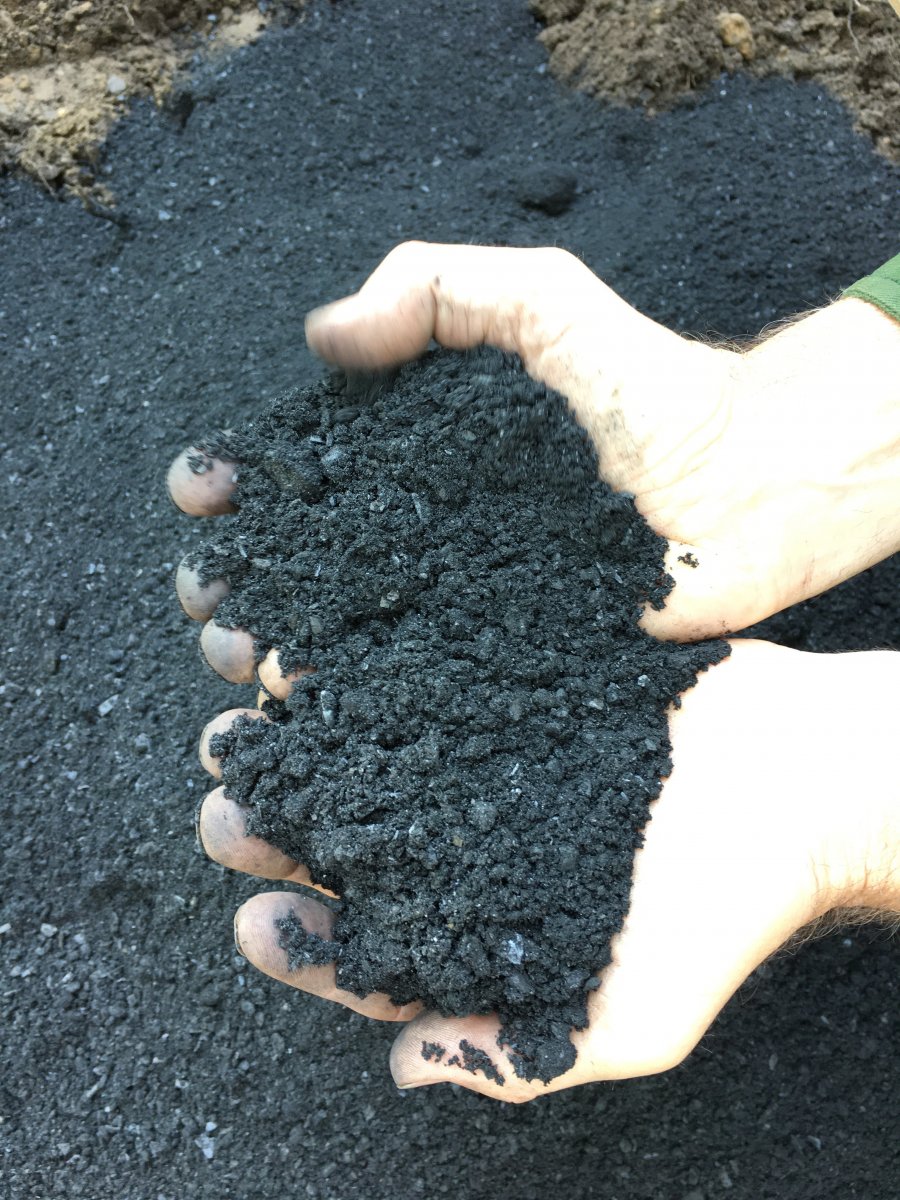 Biochar, a by-product of biomass gasification, can be added to soil. Pennsylvania Department of Conservation and Natural Resources
Biochar, a by-product of biomass gasification, can be added to soil. Pennsylvania Department of Conservation and Natural Resources
Although Meghalaya has limited water, they have other resources that can be gasified. Wood chips, nut shells, rice husks, coconut shells, and cow manure can all be used as biomass. Now some people in Meghalaya are able to trade their cow manure for freshwater from a Skywater machine.
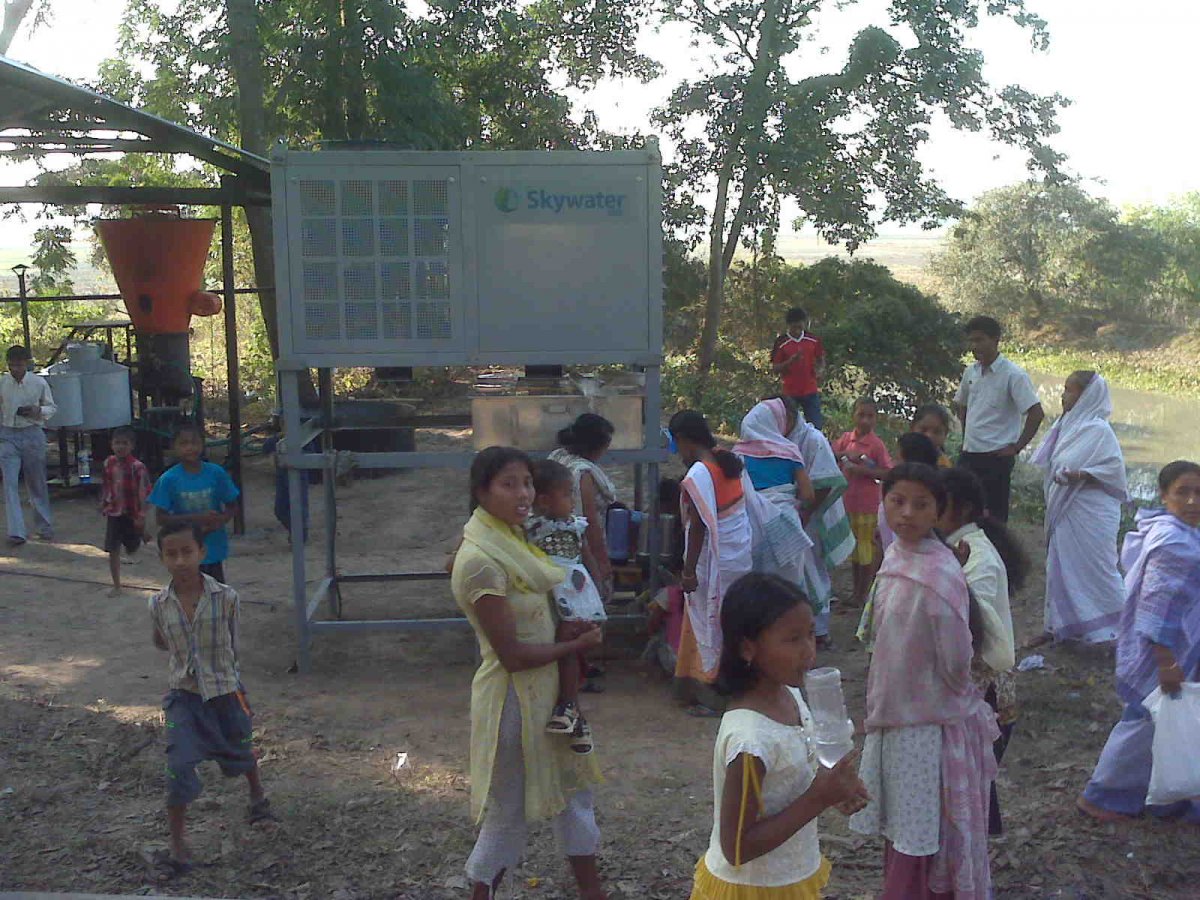 A Skywater machine powered by biomass gasification provides freshwater to people living in Meghalaya, India. Island Sky®
A Skywater machine powered by biomass gasification provides freshwater to people living in Meghalaya, India. Island Sky®
Water scarcity is a problem that directly impacts half of the world’s population. An atmospheric water generator powered by renewable energy is one innovative solution. What solutions will the next generation of innovators develop? Fifth grade students can prepare to be those innovators by using the module How Can We Provide Freshwater to Those In Need?, which was recently released by the Smithsonian Science Education Center. In the module, students define the problem of water scarcity and design and test solutions for accessing freshwater and treating contaminated water.
